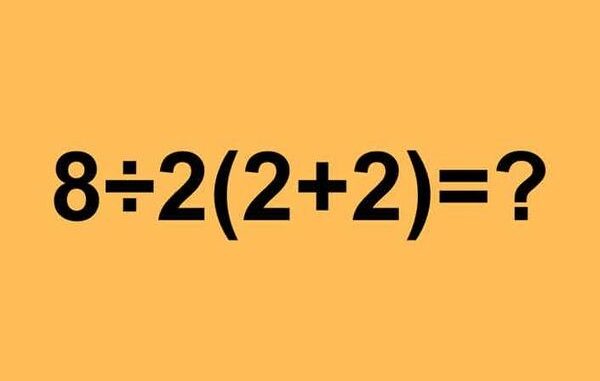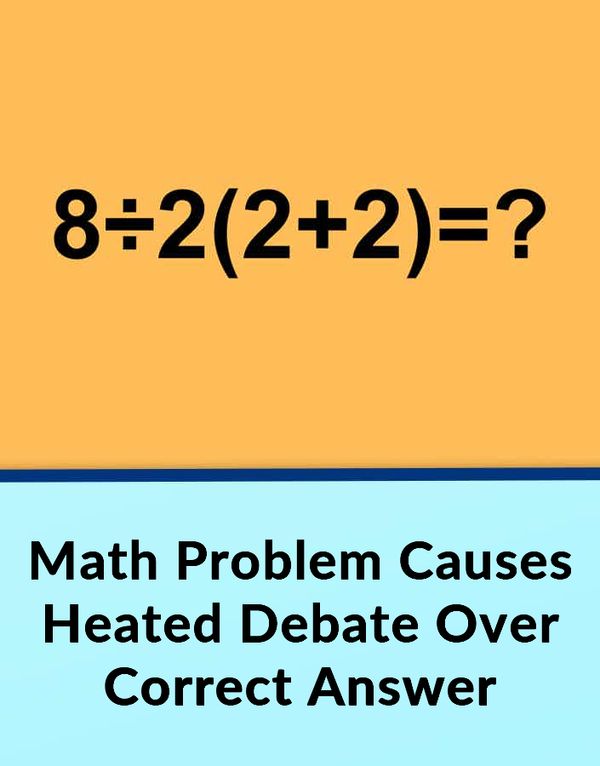
The Internet’s Latest Math Puzzle: The 8 ÷ 2(2 + 2) Controversy
The internet has seen its fair share of brain-teasers that spark heated debates. Who could forget the blue-and-black dress that took social media by storm? Now, there’s a new mathematical enigma that’s got people from all walks of life—including professionals and academics—debating fervently.
A Math Challenge Goes Viral
In 2019, a tweet introduced a math problem that has since become the center of an ongoing debate: 8 ÷ 2(2 + 2). What seems like a straightforward arithmetic problem has ignited discussions across social media platforms and beyond.

A Split Opinion at Popular Mechanics
Even at Popular Mechanics, a well-known magazine covering a range of topics, the question sparked a lively debate. The editors engaged in a spirited discussion to figure out the right answer to the puzzle.
One editor took a traditional approach based on the “PEMDAS” rule, which stands for “Parentheses, Exponents, Multiplication, Division, Addition, and Subtraction.” According to this method, you solve expressions in the order specified—parentheses first, followed by exponents, and so on, moving from left to right.
Applying this rule to the problem, the editor addressed the parentheses first to find that 2 + 2 equals 4, which simplifies the equation to 8 ÷ 2 × 4. By following the left-to-right order for division and multiplication, the solution is 4 multiplied by 4, giving a result of 16. This interpretation faced criticism from those with different mathematical viewpoints.
The Argument for 1
On the other side of the debate, some Popular Mechanics editors argued that the answer is 1. They also followed the “PEMDAS” rule but had a different interpretation. They solved the parentheses first but then considered the equation as 8 ÷ 2(4), treating the multiplication implied by the parentheses as having higher precedence over the division.
Mathematicians Weigh In
As the debate continued to capture public attention, experts such as Mike Breen from the American Mathematical Society offered their insights. Breen confirmed that the strict application of the order of operations yields 16 as the correct answer but acknowledged that the equation’s format introduces some level of ambiguity.
“Mathematics can often be ambiguous, and while the order of operations leads to 16, I wouldn’t criticize someone for arriving at 1,” Breen explained.
Despite Breen’s comments, many still sought clarity. To resolve the confusion, the editors turned to Rhett Allain, a Physics Professor at Southeastern Louisiana University, who provided further perspective.
Allain suggested that this debate illustrates how conventions in mathematics, like choosing between “gray” and “grey,” can lead to different interpretations. He proposed that the problem would be clearer if written as 8/(2*(2+2)), which results in 1.
The Debate Continues
So the question remains unresolved: Is the answer 16 or 1? This mathematical puzzle continues to engage and intrigue those who explore the fascinating world of numbers and operations.
Leave a Reply